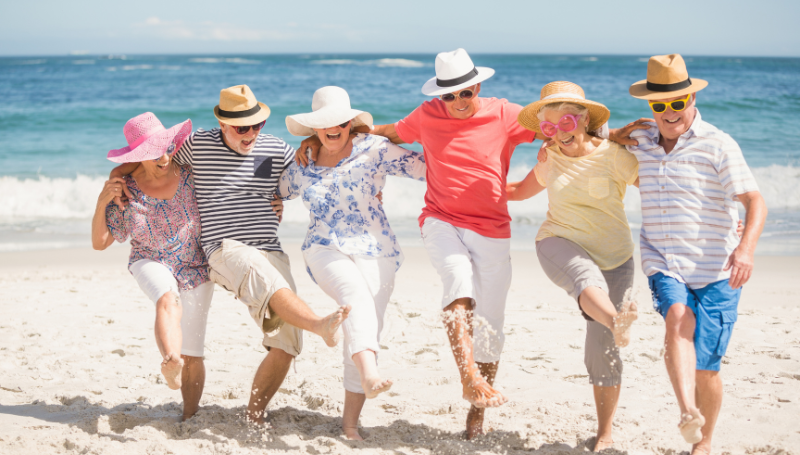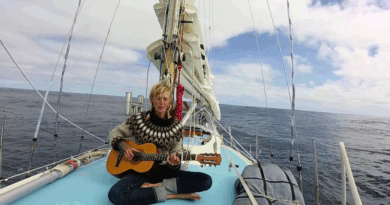Dancing for unity
(Uplift) It has been said that dancing is integral to the experience of being human. Like speech, it’s a way of expressing and communicating with others. The benefits of dancing are endless.
Building a community by dancing together
Not only does it make you smarter, happier and healthier; dancing in synchrony with others raises our pain tolerance and makes us feel more connected. Dancing together is something universal that we humans have done since the earliest times. It is fundamentally cooperative in nature. Just as dance is innate to every human being, social dance is universal to every society.[1] Making music, and movement to music, is central to ritual, courtship, identity, and human expression cross-culturally.
While I dance I cannot judge, I cannot hate, I cannot separate myself from life. I can only be joyful and whole. This is why I dance.
– Hans Bos
There is something quite magical about dancing with others in synchronised movement. Whether it’s purely for enjoyment, for fitness, or as part of a ceremony, dancing with a group will most likely leave you with an ear-to-ear grin or feeling deeply stirred and part of something sacred. It blurs the lines between the perception of “self” and “other” and leads to a bond between participants. Anthropologists have long recognised the community-building effects of dancing:
As the dancer loses himself in the dance, as he becomes absorbed in the unified community, he reaches a state of elation in which he feels himself filled with an energy of force immensely beyond his ordinary state . . . finding himself in complete and ecstatic harmony with all the fellow-members of his community, experiences a great increase in his feelings of amity and attachment towards them. (Radcliffe-Brown 1933/1948)
Studies have found that even smaller moves like tapping or nodding your head to the same beat as someone else still has its benefits. Walking around in step, and singing in synchrony with others creates stronger feelings of trust and connectedness, as well as an increased willingness to cooperate.
Feel connected and raise your pain threshold
Brownwyn Tarr, a dancer and experimental psychologist at Oxford University, investigated the effects of synchronised dancing. In this study, 264 high school students from local schools on Marajo Island, Brazil, were recruited to participate in learning one of four movement conditions. The movements were high and low exertion, and synchronous or partially synchronous.
In synchrony conditions, all participants performed the same movements to the same music at the same time; partial synchrony involved performing different movements to the same music. Participants were able to engage in either full-body dance movements standing up or small hand gestures performed seated. The teenagers, in groups of three, were asked to follow either the same dance routine or to follow their own individual sequence of moves written down on a card.
Those who were doing the same dance moves in time with the rest of the group felt more connected to one another afterwards. Exertion, which raised their level of endorphins, produced higher pain thresholds. As it’s hard to measure endorphin levels directly, they used pain thresholds as an indirect measure, by attaching and inflating a blood pressure cuff on their arm, and determining how much pressure they could stand. Those who sat down to dance and were out of sync with their group felt their pain threshold lessen. Tarr states, “The key point is that if you exert yourself or synchronise your movements, you can arrive at an elevated pain threshold. If you do both, the effect is additive.” Tarr also said that perhaps this is why we love to flashmob.
[…] We’re getting this elevated pain threshold, from the feel good chemicals pumping through our systems, but also we feel more connected to others because we’re doing the same thing at the same time and that signals the sense of connective oneness we like to get.
DANCING BUILDS SOCIAL BONDS.
Dancing builds community
Another study looked at how people grew closer through singing. It was found that making music together also elevated pain tolerance and social bonding. People from a community choir met in both a small group and a large group or ‘mega choir’. Results showed that feelings of inclusion, connectivity, positive affect, and measures of endorphin release all increased across singing rehearsals.
The finding that singing together fosters social closeness – even in large contexts where individuals are not known to each other – is consistent with evolutionary accounts that emphasize the role of music in social bonding, particularly in the context of creating larger cohesive groups than other primates are able to manage.
To anyone who dances, sings or makes music with others, these findings will hardly come as a surprise. The idea that synchronous movement and music increases group cohesion has old roots. Becoming “absorbed in the unified community” through music and dance can happen in many settings; at carnivals, parties, ceremonies or celebrations. Historians suggest that armies, churches and communities may all have benefited either intentionally or unintentionally from cultural practices that draw on physical synchrony to strengthen bonds between members. Judith Lynne Hanna said:
To understand humans, Charles Darwin recognised it is first necessary to understand how they gather and transmit knowledge in ways similar to and different from their animal forebears. The more we know about dance — its presence, absence and its resurgence in individual and group life — the more we will know about ourselves: To Dance is Human.
And if dancing and singing build trust and unity, we probably should all do more of it.
Watch the video: We Came to Dance.
Source: Uplift
You may also like:






